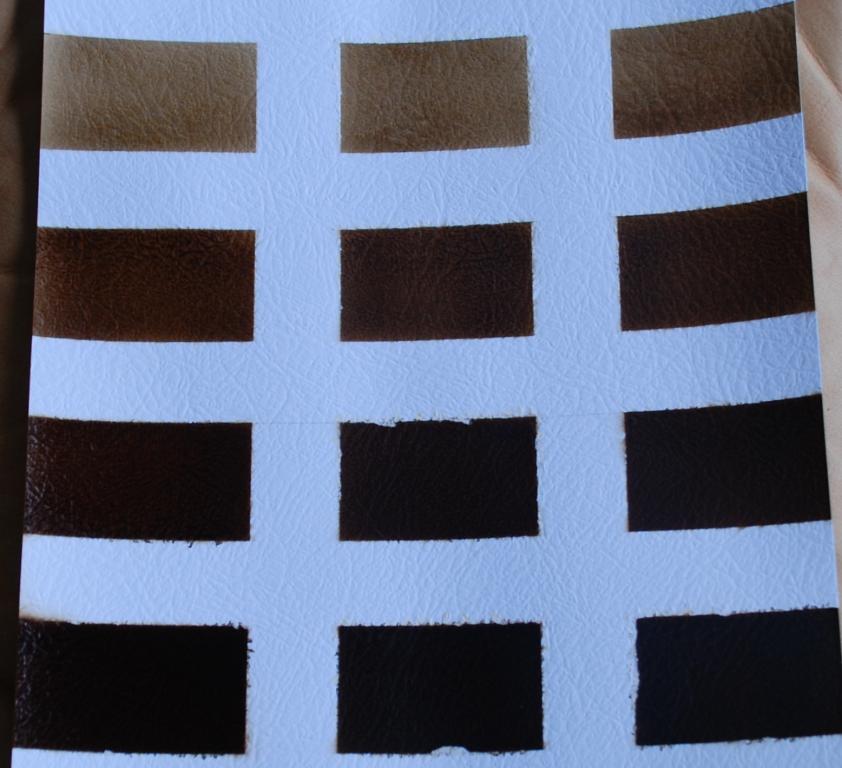Here is a copy and paste for Aniline 76.
Again more questions are welcome. . .
Aniline 76 a Coating Dye by Leather Doctor is a new-generation transparent surface coating dyestuff that provides superior light fastness and fade resistance.
Aniline 76 is a lively and brilliant surface coating dyestuff that has abilities to coat over existing staining dyestuff like Aniline 21 or existing finishes.

The picture example shows the color intensity level from top to bottom and the luster level from left to right with Aniline 76.
Related Product:
* Aniline 76 (Clear) is used to adjust the color intensity.
* Stripper 2.3 is used to strip existing finishes.
* Degreaser 2.2 is used to remove grease.
* Rinse 3.0 is used to rinse.
* Acidifier 2.0 is to control dye bleeding.
* Hydrator 3.3 is used to relax leather.
* Fatliquor 5.0 is used to soften leather when dry.
* Aniline Top 76G is used to seal the dyestuff.
* Protector B or Protector B Plus leather scent version is used to impart a non-stick, rub-resistant surface.






